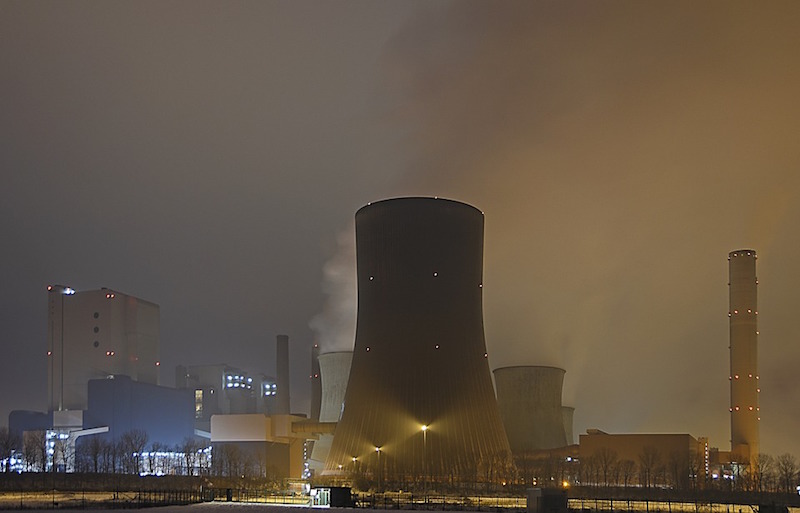In light of the positive news from AIA concerning progress toward its 2030 Commitment targets, it’s nice to see the AEC community showing resolve in this highly charged, post-Paris Climate Accord pullout political environment.
The number of firms involved in AIA’s voluntary pact to slash energy consumption in buildings grew to more than 400 in July. A select number of design practices have already exceeded the initiative’s ambitious target of a portfolio-average predicted energy savings of 70% or greater. To date, more than 330 individual projects designed by 2030 Commitment signatories met or exceeded this target.
If AIA’s estimates are accurate, the environmental and economic impacts of 2030 Commitment projects are significant. The collective potential energy savings from 2016 projects represents 16.7 million metric tons of greenhouse gas emissions, or the equivalent of operating five coal-fired power plants in a given year. The projects also represent more than $1.4 billion in annual energy cost savings.
Impressive, right? But is it enough?
Perhaps not when you consider the types of projects AIA members (and most other AEC firms) work on: primarily new construction, mid- to large-size in scale.
The sleeping giant in the race to slash total energy consumption in the U.S. buildings market is the existing building stock—especially small to mid-sized commercial buildings (50,000 sf or smaller). Retail stores, gas stations, banks, office buildings, schools, auto sales centers—these structures make up 94% of the commercial property stock and represent half of the total square footage. Collectively, they consume 44% of the energy used in all buildings in the U.S., according to DOE.
There is an enormous opportunity to effect change on a wide scale through the deep energy retrofitting of existing commercial buildings. Yet to date, very little progress has been made, according to Jennifer Thorne Amann, Buildings Program Director with Washington, D.C.-based American Council for an Energy-Efficient Economy. In a new white paper, Thorne Amann breaks down the numbers: Of the 332 zero-energy and ultra-low-energy buildings tallied by the New Buildings Institute, only 35 are retrofit projects. Of these, nine were verified as ZEB.
An estimated two billion sf of commercial floor space—2.2% of the total square footage—is retrofit each year, with an average energy-use reduction of 11%. “While this retrofit rate would cover roughly one-third of the existing commercial building stock by 2030, unless the resulting energy savings substantially improve, these retrofits will fall far short of the energy savings goals adopted by states and cities,” says Thorne Amann.
Read her white paper: http://tinyurl.com/ACEEEwp
Related Stories
| Nov 2, 2010
Energy Analysis No Longer a Luxury
Back in the halcyon days of 2006, energy analysis of building design and performance was a luxury. Sure, many forward-thinking AEC firms ran their designs through services such as Autodesk’s Green Building Studio and IES’s Virtual Environment, and some facility managers used Honeywell’s Energy Manager and other monitoring software. Today, however, knowing exactly how much energy your building will produce and use is survival of the fittest as energy costs and green design requirements demand precision.
| Nov 2, 2010
Yudelson: ‘If It Doesn’t Perform, It Can’t Be Green’
Jerry Yudelson, prolific author and veteran green building expert, challenges Building Teams to think big when it comes to controlling energy use and reducing carbon emissions in buildings.
| Nov 2, 2010
Historic changes to commercial building energy codes drive energy efficiency, emissions reductions
Revisions to the commercial section of the 2012 International Energy Conservation Code (IECC) represent the largest single-step efficiency increase in the history of the national, model energy. The changes mean that new and renovated buildings constructed in jurisdictions that follow the 2012 IECC will use 30% less energy than those built to current standards.
| Nov 1, 2010
Sustainable, mixed-income housing to revitalize community
The $41 million Arlington Grove mixed-use development in St. Louis is viewed as a major step in revitalizing the community. Developed by McCormack Baron Salazar with KAI Design & Build (architect, MEP, GC), the project will add 112 new and renovated mixed-income rental units (market rate, low-income, and public housing) totaling 162,000 sf, plus 5,000 sf of commercial/retail space.
| Nov 1, 2010
Vancouver’s former Olympic Village shoots for Gold
The first tenants of the Millennium Water development in Vancouver, B.C., were Olympic athletes competing in the 2010 Winter Games. Now the former Olympic Village, located on a 17-acre brownfield site, is being transformed into a residential neighborhood targeting LEED ND Gold. The buildings are expected to consume 30-70% less energy than comparable structures.
| Oct 27, 2010
Grid-neutral education complex to serve students, community
MVE Institutional designed the Downtown Educational Complex in Oakland, Calif., to serve as an educational facility, community center, and grid-neutral green building. The 123,000-sf complex, now under construction on a 5.5-acre site in the city’s Lake Merritt neighborhood, will be built in two phases, the first expected to be completed in spring 2012 and the second in fall 2014.
| Oct 21, 2010
GSA confirms new LEED Gold requirement
The General Services Administration has increased its sustainability requirements and now mandates LEED Gold for its projects.
| Oct 18, 2010
World’s first zero-carbon city on track in Abu Dhabi
Masdar City, the world’s only zero-carbon city, is on track to be built in Abu Dhabi, with completion expected as early as 2020. Foster + Partners developed the $22 billion city’s master plan, with Adrian Smith + Gordon Gill Architecture, Aedas, and Lava Architects designing buildings for the project’s first phase, which is on track to be ready for occupancy by 2015.
| Oct 13, 2010
Editorial
The AEC industry shares a widespread obsession with the new. New is fresh. New is youthful. New is cool. But “old” or “slightly used” can be financially profitable and professionally rewarding, too.
| Oct 13, 2010
Prefab Trailblazer
The $137 million, 12-story, 500,000-sf Miami Valley Hospital cardiac center, Dayton, Ohio, is the first major hospital project in the U.S. to have made extensive use of prefabricated components in its design and construction.














